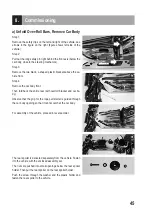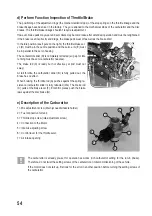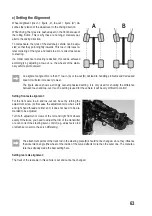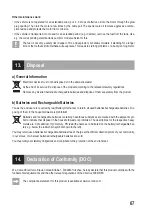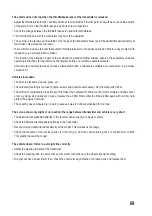
54
d) Perform Function Inspection of Throttle/Brake
The positioning of the adjustment rings (the mechanical limit stops) of the stop springs on the throttle linkage and the
brake linkage have been set in the factory. They are attuned to the mechanical stops of the carburettor and the disc
brakes. The throttle/brake linkage shouldn‘t require readjustment.
However, brake pads may wear and set collars may become loose after extended operation and must be retightened.
If the brake is set incorrectly and drags, the brake pads wear off as well as the brake disc!
In the idle position (see figure on the right), the throttle/brake ser
-
vo (D) must be in the centre position and the servo arm (E) must
be in parallel to the servo housing.
The carburettor slider (B) is completely retracted (air gap for idle
running must be set via carburettor needles).
The brake rod (C) is ready but not effective yet (rod must not
sway).
At full throttle, the carburettor slider (B) is fully pulled out, the
brake has no effect.
When braking, the throttle rod (A) pushes against the spring re-
sistance (carburettor slider is fully retracted, idle). The brake rod
(C) pulls at the brake lever (F). Eccentric pieces push the brake
jaws against the disc brake (G).
e) Description of the Carburettor
1 = Mix adjustment screw (Main jet needle/nozzle holder)
2 = Fuel connection for tank
3 = Throttle stop screw (idle adjustment screw)
4 = Connection to the Motor
5 = Idle mix adjusting screw
6 = Control lever for the throttle servo
7 = Air intake opening
The carburettor is already pre-set for operation ex works (rich carburettor setting for the run-in phase).
Therefore, do not twist the setting screws of the carburettor at initial commissioning of the vehicle.
If the motor does not start up, first look for the error in another position before turning the setting screws of
the carburettor.
B
A
C
F
D
G
E
1
2
3
6
7
4
5
Summary of Contents for 490150
Page 142: ...142 ...
Page 143: ...143 ...






